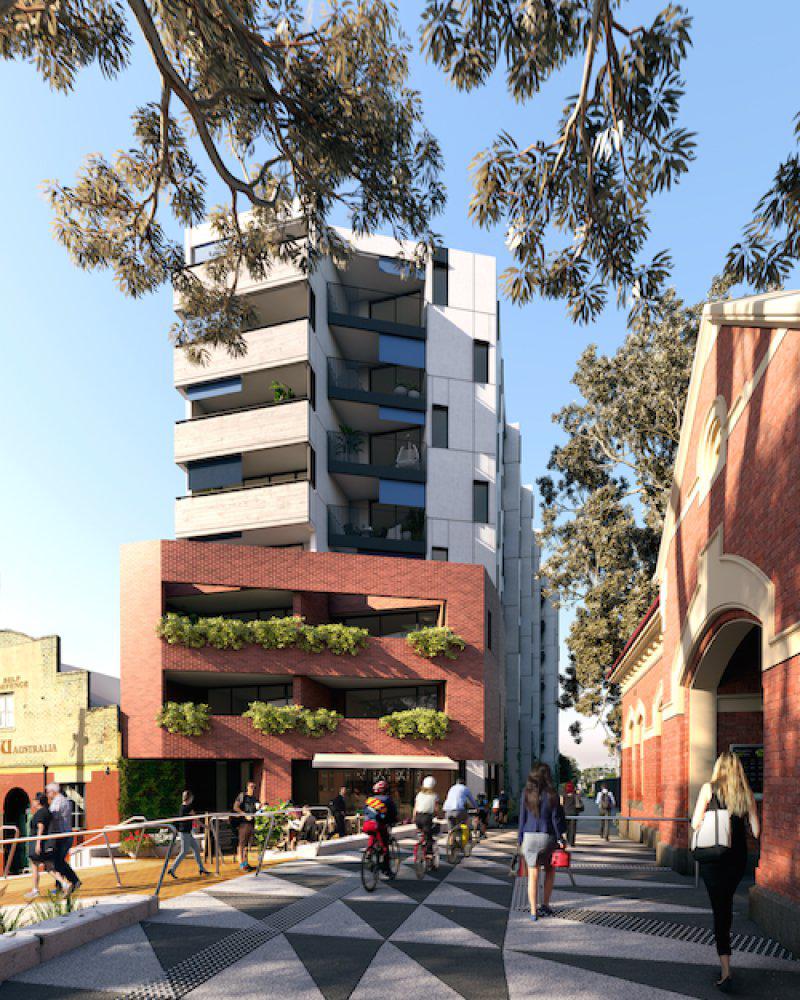Neometro Design Director Jeff Provan on a Year of 'Better Apartments'
TUD+ MEMBER CONTENTTwelve months ago at MPavilion 2016, Minister for Planning Richard Wynne, Simon Knott of BKK Architects, James Tutton from Neometro and director of MAArchitects Karen Alcock met for a High Density Happiness discussion on a proposed apartment design standards framework.
Shortly after, in December 2016, the Victorian Government released a report, Better Apartments Design Standards. Having followed the development of the standards over the past year, The Urban Developer caught up with Neometro design director Jeff Provan to discuss the new standards’ impact on the industry.
Q. How have the guidelines been received by local councils, architects and developers?
JP: At the time of our High Density Happiness panel discussion last year, there was a lot of anticipation leading up to the release of the guidelines. There was a lot of nervous sentiment in the development and design sector about how far the guidelines would go, how prescriptive and how effective they would be. Following their release, there was uncertainty again about how they would be implemented and enforced.
Twelve months on, the industry has digested and there seems to be broader understanding. We’re now starting to see how development and design are responding to them. Due to the timely nature of the development process we’re yet to see the guidelines have a real market impact, but I see them as a positive step, one that will hopefully support buyer awareness in what is and is not good apartment design, and what will make apartments liveable.
Once we see built form outcomes of apartments that are truly compliant to the new standards, then we’ll be able to say whether it was a successful initiative.
Q. How is the architectural and planning review process of current new apartment developments influenced by the apartment design standards?
JP: The formal planning review process is yet to be fully implemented but, from our perspective, we haven’t varied our approach.
Neometro has always ensured that our apartments have a high degree of amenity with maximised natural light, cross ventilation, passive heating and cooling methods and generous balconies.
The difficulty may come when we believe in a design outcome, which from our 30 years of experience we think will provide a great level of amenity, but it may not strictly adhere to the standards. We’ll have to see how the formal process unfolds and the degree to which innovative design can be supported within the discretion provisions of the guidelines.

Q. Do you see the standards being a force for good in housing quality and longevity?
JP: Lifting the standards of apartment development design is definitely not a bad thing. However, the standards will improve the quality of design and apartment amenity only to a point, but we need to continually strive to improve. That will only happen once our expectations for quality apartments improves.
Neometro has been developing better apartments for 30 year before there were standards. Our Jewell Station Development, for example, already strived to meet the objectives of the guidelines before they were codified. We need leaders in the industry to keep pushing for the best possible built form outcome and to keep educating buyers about the value of good design.
Q. What effect do you think the apartment standards have had on buyer confidence?
JP: The impact to buyer confidence is very dependent on government education programs. We need to see more of a public campaign regarding the standards, their objectives and how they will affect the finished apartment. Unless a buyer is directly engaged with changes to state planning regulations, they wouldn’t know the Better Apartment Design Standards exist.
There’s a real opportunity here to bridge the gap between the industry and buyers, promoting transparency, accountability and government initiative to improve the quality of housing in our cities. Our High Density Happiness series is committed to supporting the development of design awareness, connecting the public with the industry leaders that are shaping everyone’s built environment. A broader government platform is needed to amplify the message.
Q. How do you think the standards shift the public perception of high-density living to a perception where lifelong apartment living is not only expected but desired -- as it is in major cities around the world?
JP: In order for apartment living to be desired housing in Australia, we need to improve public education about the value of internal and external design amenity from a lifestyle and health perspective.
Delivering high quality, durable apartments that can adapt to a resident’s changing lifestyle requirements gives a buyer a real choice in how they want to live without needing to compromise on budget.
The ability to choose between a well-designed apartment connected to established infrastructure that supports physical and social connectivity, or a detached home on the fringe that is isolated by long commute times and disconnected communities, provides a real market alternative.














